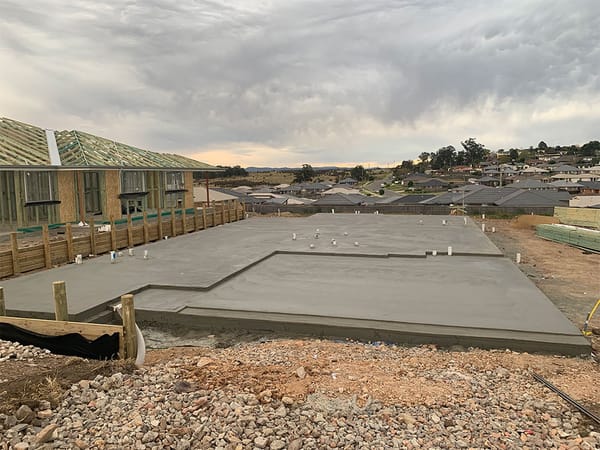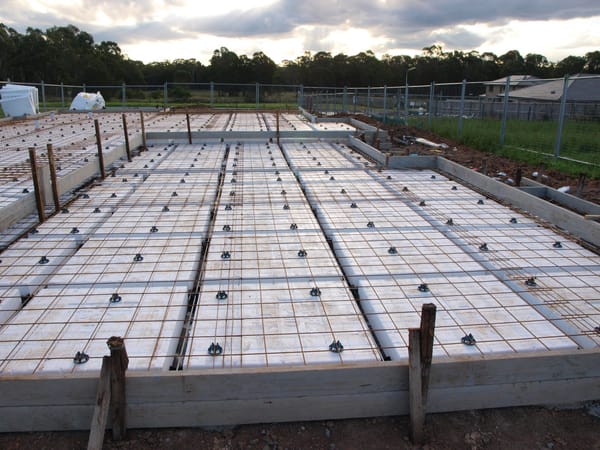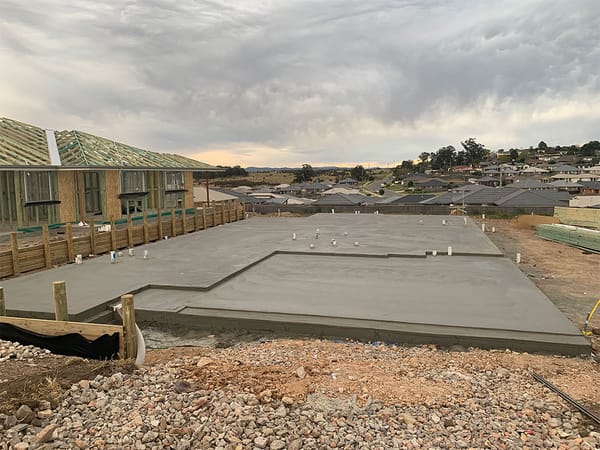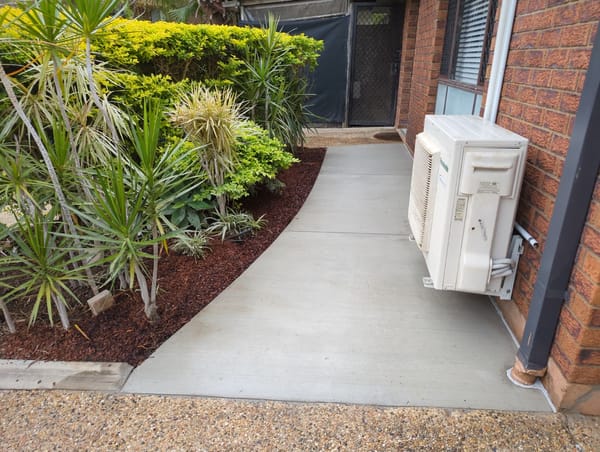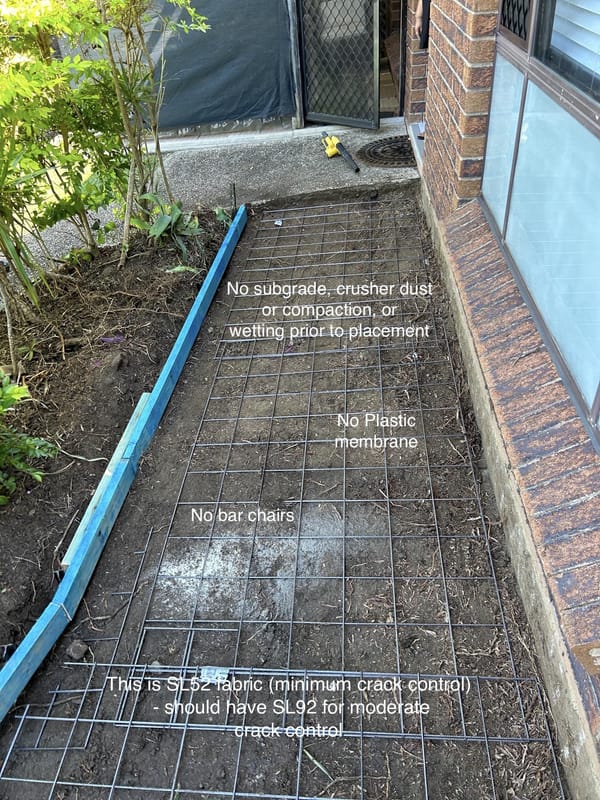Take The Quiz On This Post
Read the post, then take the quiz—test your knowledge and see what you’ve learned!
Introduction
Ever wondered why concrete pavements and floors have those grooved lines running across them? They're called joints, and they actually serve a very important purpose. Without them, concrete slabs would crack randomly as they expand and contract.
Joints provide controlled points of weakness so that the concrete can crack in a neat and tidy manner. Let's face it, concrete moves - it expands and shrinks as temperatures change, and joints help it do that without causing damage.
There are several different types of joints used in concrete construction. Some allow total separation between slabs, while others facilitate cracking at the joint. In this essential guide, we'll explore the different types of joints in concrete and show you how they work to improve the performance and longevity of concrete structures. Read on to become an expert in concrete joints.

What Are Concrete Joints and Why Are They Important?
Concrete joints are intentional cracks in concrete slabs and walls that help control where cracking occurs. Without them, concrete would crack randomly as it shrinks during curing. Joints create a weakened line in the concrete so any cracks that form will follow the joint.
There are several types of concrete joints, including:
- Control joints: Also known as contraction joints, these are placed during construction to control cracking. They are cut into the concrete using a concrete saw once it has hardened. Control joints are usually spaced 3 to 5 metres apart in slabs.
- Expansion joints: These allow for movement between concrete slabs or walls. They use a flexible filler material like asphalt-impregnated fiberboard to prevent cracking. Expansion joints are needed when there are changes in direction or abrupt ends in walls and slabs. They are also used when concrete abuts other materials like brick.
- Isolation joints: These separate concrete from other elements like columns, drains or manholes. They allow for independent movement so cracks are not transferred between the concrete and the other element. Isolation joints often use a compressible filler like cork, polystyrene or polyethylene.
In summary, concrete joints play an important role in damage control and the longevity of concrete structures. Planned and properly installed, they will help ensure your concrete looks as good as new for years to come.

The Main Types of Concrete Joints
When the concrete hardens, it shrinks. This shrinkage causes stress in the concrete that can lead to cracking if not properly addressed. That's where concrete joints come in. Joints are designed to control where cracks form so they happen in a neat and tidy fashion.
There are several types of joints used in concrete construction:
- Expansion joints allow for movement between concrete slabs. They are the most flexible type of joint and are often filled with sealant, foam, or asphalt to prevent water and debris from getting in. Expansion joints are essential in large concrete structures like bridges, walls, and floors.
- Construction joints are placed when concrete pouring is interrupted for more than an hour. The joint surface is roughened so the new concrete bonds well to the existing section. Reinforcing bars are often extended through construction joints.
- Contraction joints, or control joints, are cuts made in concrete slabs to control cracking. The joints are usually made by cutting grooves into the surface of the slab while the concrete is still fresh. As the concrete shrinks during curing, cracks develop at the grooves.
- Isolation joints separate concrete from other materials like walls, footings, and columns. They allow for small amounts of movement between the concrete and the other material. Isolation joints are usually filled with sealant, foam, or asphalt.
Planning and properly installing the right types of joints can help ensure your concrete slab stands the test of time. Preventing uncontrolled cracking is key to concrete longevity and performance. Choose wisely!

Construction Joints - Purpose and Design
Construction joints are placed in concrete slabs to control cracking as the concrete cures and shrinks. They are designed to direct where cracks will form so the slab will crack in a straight line at the joint, rather than random jagged cracks across the slab.
There are several types of construction joints used:
- Contraction joints - Also known as control joints, these are placed to relieve internal pressure as the concrete shrinks. They are cut into the slab after it has hardened.
- Isolation joints - These separate slabs from other parts of the structure like walls or footings. They allow for movement between the slab and other elements. Isolation joints are filled with a compressible material like foam board or felt.
- Expansion joints - These also separate slabs from walls and footings but are wider to allow for more movement. They are filled with a sealant material that can compress and expand. Expansion joints are used on slabs that experience greater changes in temperature or moisture that lead to more movement.
The spacing and depth of construction joints depends on several factors like the concrete thickness, aggregate size, and weather conditions during curing. In general, joints should be spaced 15 to 30 feet apart in large commercial slabs. Residential slabs may require joints every 8 to 12 feet.
For the best results, construction joints should be installed correctly according to industry standards. They should be cut to a depth of at least 1/4 of the slab thickness when the concrete has hardened enough to support the weight of a worker. The joint should be as wide as possible for the specific application, at minimum around 1/2 inch.
Wider joints (18mm or more) will be more effective at controlling cracks. Instal joint filler or sealant and ensure it bonds well to the sides of the joint. With proper design and installation of construction joints, random cracking in concrete slabs can be greatly reduced or eliminated.

Control Joints - Controlling Cracks
Control joints are placed in concrete slabs to help control where cracks form. As concrete dries and cures, it shrinks. This shrinkage causes internal stresses that can lead to uncontrolled cracking. Control joints create weak points in the concrete where cracks are allowed to form in a controlled manner.
Purpose
The main purpose of control joints is to prevent random cracking in concrete slabs. They guide cracks to form at the joint, creating a neat, straight line. Control joints also help concrete break in straight sections if it cracks due to heavy loads or ground movement. Properly placed control joints can produce small, uniform cracks that do not affect the performance or appearance of the concrete.
Without control joints, concrete slabs can develop irregular cracks that make the surface unsightly and unstable. Control joints are a simple, inexpensive way to reduce cracking and improve both the appearance and structural integrity of concrete slabs.
Types of Control Joints
There are several types of control joints used in concrete slabs:
- Saw-cut joints - Made by cutting into concrete with a concrete saw after it hardens. Saw cuts penetrate 1/4 to 1/3 of the slab thickness.
- Formed joints - Made by inserting a joint filler or forming strip into concrete while it's wet. The joint filler creates a weak spot for cracks to form.
- Grooved joints - Made by grooving or notching concrete while it's wet, using a grooving tool. Like formed joints, grooves create weak spots for controlled cracking.
- Tooled joints - Made by running an edge tool, joint cutter or grooving tool over concrete while it's hardening. Tooled joints are more shallow than other types of control joints.
- Bonded isolation joints - Flexible joint fillers that bond to concrete on both sides, allowing some movement. Used where slabs of different ages meet.
Control joints are a must for any concrete slab to help avoid unsightly random cracking. Paying attention to the proper layout, spacing, and installation of control joints will ensure your concrete achieves maximum durability and an attractive appearance.

Isolation Joints - Allowing Movement
Isolation joints are designed to allow movement in concrete slabs without causing damage. They physically separate slabs so each section can move independently. There are a few types of isolation joints you'll want to consider for your concrete project.
Expansion Joints
Expansion joints accommodate the natural expansion and contraction of concrete as temperatures change. They are placed every 20 to 30 feet in slabs. The joint is filled with a flexible material like asphalt-saturated fiberboard or cork that allows movement.
Control Joints
Control joints are designed to control where cracks form in concrete. They are cut or formed in slabs to relieve internal stresses as the concrete hardens and dries. Control joints create weakened areas where the concrete will crack in a straight line. They should be placed every 6 to 18 feet in slabs.
Construction Joints
Construction joints are placed when concrete is poured in sections. They allow the separate sections to move independently. Construction joints have a roughened surface so the new concrete bonds well to the existing concrete. Reinforcing steel also extends across construction joints.
Seismic Joints
In earthquake-prone areas, seismic isolation joints are used to prevent damage. These joints have a wider gap and incorporate flexible material that can accommodate seismic movement. They are often used for bridge construction and in the foundations and slabs of high-rise buildings.
Choosing the right type of isolation joint for your project and installing them properly is key to preventing uncontrolled cracking and damage in concrete slabs. Allowing small amounts of movement through well-designed joints will help ensure your concrete structure remains intact for years to come.
Conclusion
So there you have it, a deep dive into the essential guide to concrete joints. From preventing cracks to allowing expansion, joints serve an important purpose in any concrete structure. Now you understand the types - contraction, construction, and expansion - and can make an informed choice for your next project. You've got the knowledge to have an educated discussion with your contractor about the pros and cons of each option. Concrete work is an art form, but with the right techniques and materials, you'll end up with a solid, long-lasting result. Apply what you've learned here to make your next concrete pour a success.
The devil is in the details, so don't forget to consider your climate, location, and specific needs. And remember, good luck isn't enough - you need good planning too. Stay safe and keep building!



